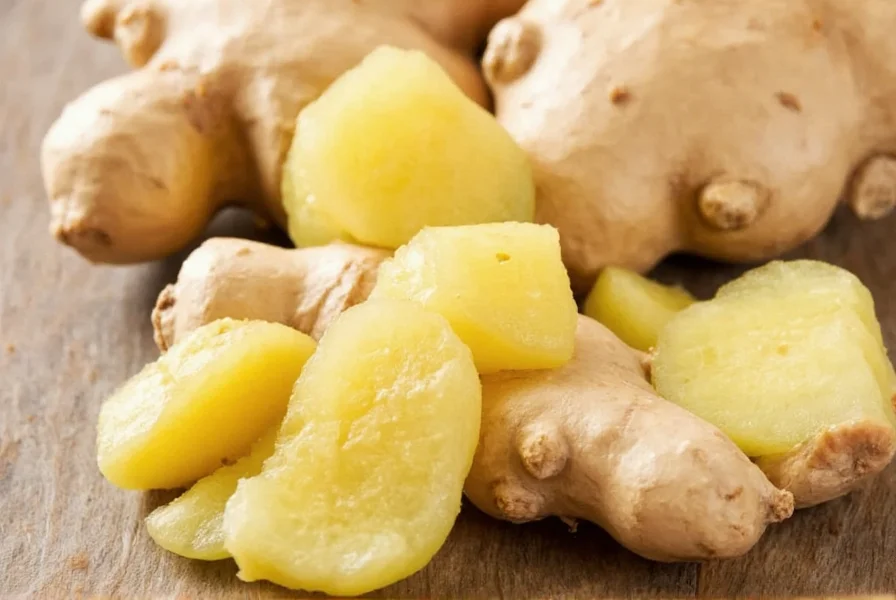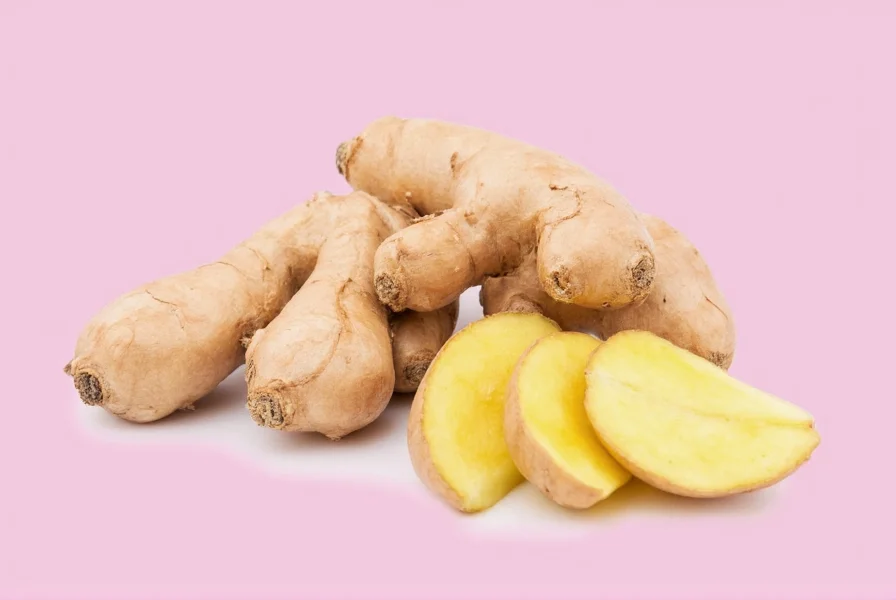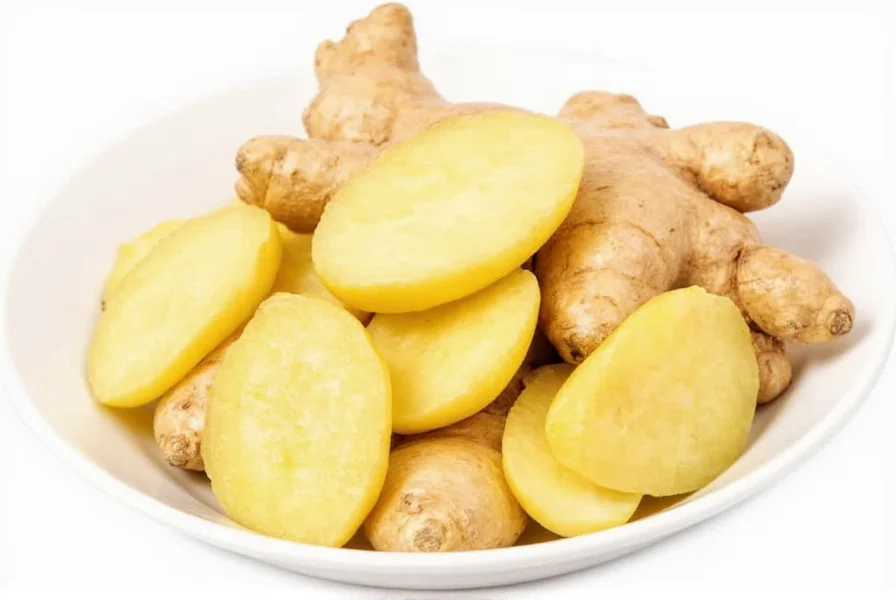Fresh ginger root transforms dishes with its distinctive spicy-sweet flavor while offering science-backed health properties. This underground stem, often mistakenly called a root, has been used for over 2,000 years across Asian and Middle Eastern cultures for both culinary and wellness purposes.
What Makes Fresh Ginger Unique
The magic of fresh ginger lies in its chemical composition. When you cut or crush raw ginger, the enzyme zingibain activates, converting gingerols into zingerone and shogaols. These compounds create ginger's characteristic heat and provide most of its studied health benefits. Unlike dried ginger powder, fresh ginger contains higher moisture content and different compound ratios, resulting in a brighter, more complex flavor profile.

Science-Backed Health Benefits
Research indicates fresh ginger may provide several health advantages:
| Benefit | Scientific Support | Recommended Amount |
|---|---|---|
| Nausea relief | Multiple studies show effectiveness for morning sickness, motion sickness, and chemotherapy-induced nausea | 1-1.5 grams daily |
| Anti-inflammatory effects | Gingerols inhibit inflammatory pathways; may help with osteoarthritis pain | 2 grams daily for chronic conditions |
| Digestive support | Stimulates gastric motility and enzyme production | 0.5-1 gram before meals |
These benefits appear most pronounced when consuming raw or minimally processed ginger, as heat and drying alter the compound profile.
Selecting Quality Fresh Ginger
When choosing fresh ginger at the market, look for these characteristics:
- Firmness: Should feel solid with no soft spots or wrinkles
- Appearance: Smooth, taut skin with a golden tan color
- Moisture: Shouldn't appear dried out or fibrous
- Aroma: Should have a clean, spicy scent when scratched
Young ginger has thinner skin and higher moisture content, making it ideal for pickling or eating raw. Mature ginger has a stronger flavor and thicker skin, better suited for cooking and longer storage.
Proper Storage Techniques for Maximum Freshness
How to store fresh ginger depends on your intended usage timeline:
- Short-term (2-3 weeks): Store unpeeled in the refrigerator's crisper drawer inside a paper bag or wrapped in paper towels inside an airtight container
- Medium-term (1-2 months): Freeze whole or sliced in an airtight freezer bag; frozen ginger can be grated directly without thawing
- Long-term (6+ months): Peel, slice, and store in a jar covered with sherry or vodka in the freezer
Avoid storing ginger at room temperature for extended periods, as it quickly becomes moldy or shrivels. Never wash ginger before storage, as excess moisture accelerates spoilage.
Effective Preparation Methods
Professional chefs use these techniques for working with fresh ginger:
- Peeling: Use the edge of a spoon to gently scrape off skin—this removes minimal flesh while accessing the flavorful layer just beneath the skin
- Grating: Freeze ginger for 15 minutes before grating for cleaner results with less stringiness
- Slicing: Cut across the fiber direction for more tender results in cooked dishes
- Infusing: For beverages, lightly crush ginger to release more flavor without making the drink fibrous

Fresh Ginger vs. Ground Ginger: When to Use Each
Understanding the differences helps you choose the right form:
- Fresh ginger provides brighter, more complex flavor with citrus notes; ideal for marinades, stir-fries, and raw applications like salad dressings
- Ground ginger offers warmer, more concentrated spice; better for baked goods and spice blends where texture matters less
As a general rule, 1 tablespoon freshly grated ginger equals ¼ teaspoon ground ginger, though flavor profiles differ significantly. For maximum health benefits, fresh ginger generally provides higher concentrations of active compounds than dried alternatives.
Simple Ways to Incorporate Fresh Ginger
Try these practical applications:
- Add grated ginger to morning smoothies for digestive benefits
- Create ginger-infused water by muddling sliced ginger in cold water
- Make quick ginger paste (ginger, garlic, oil) for stir-fry bases
- Add thin slices to tea for natural flavor and wellness properties
- Include in salad dressings for a flavor boost without overpowering
Identifying Spoiled Ginger
Discard ginger showing these signs of spoilage:
- Mold growth (any color)
- Soft, mushy texture when pressed
- Darker spots that penetrate beyond surface level
- Sour or fermented smell
Slightly wrinkled ginger may still be usable if the flesh remains firm and aromatic—simply cut away affected areas. However, when in doubt, discard questionable ginger to avoid potential foodborne illness.
Frequently Asked Questions
How long does fresh ginger last in the refrigerator?
Properly stored fresh ginger lasts 2-3 weeks in the refrigerator when kept unpeeled in an airtight container with paper towels to absorb moisture. Check weekly for any signs of mold or softening.
Can you freeze fresh ginger without losing quality?
Yes, freezing actually preserves fresh ginger's quality better than refrigeration for long-term storage. Freeze whole or sliced in an airtight bag for up to 6 months. Frozen ginger can be grated directly without thawing, making it convenient for recipes.
What's the best way to peel fresh ginger easily?
The most efficient method uses the edge of a spoon to gently scrape off the skin. This technique removes minimal flesh while accessing the flavorful layer just beneath the skin, wasting less of the valuable ginger compared to using a vegetable peeler.
Does fresh ginger have more health benefits than powdered ginger?
Research suggests fresh ginger contains higher concentrations of gingerol, its primary bioactive compound, compared to dried ginger. The drying process converts some gingerols to shogaols, changing the compound profile. For maximum potential health benefits, fresh ginger generally provides more active compounds, though both forms offer benefits.
How can I tell if my fresh ginger has gone bad?
Spoiled ginger shows visible mold, has a soft or mushy texture when pressed, develops dark spots that penetrate beyond the surface, or emits a sour or fermented smell. Slightly wrinkled ginger may still be usable if the flesh remains firm and aromatic—simply cut away affected areas.











 浙公网安备
33010002000092号
浙公网安备
33010002000092号 浙B2-20120091-4
浙B2-20120091-4